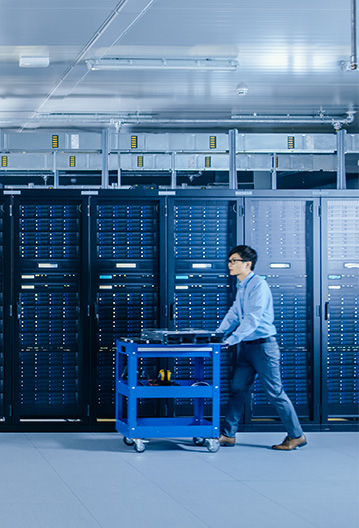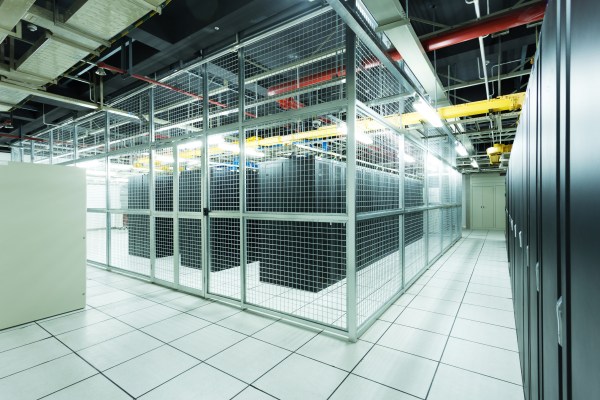Across all walks of IT, some of the best tools available are open-source. Not only are open-source tools free but they are also highly customizable. This can make them excellent choices for any business. With that in mind, here is a straightforward guide to 6 of the best open source cloud tools and open source bare metal tools, explaining their benefits and best practices for their implementation.
Ansible
Ansible is an open-source automation tool used for configuration management, application deployment, and task automation. It is agentless, making it easy to deploy across both cloud and bare metal environments. Ansible uses simple, human-readable YAML syntax, which lowers the barrier to entry and allows for quick adoption across teams. Its wide range of modules supports various tasks, from cloud provisioning to network automation.
The primary challenge with Ansible is its performance in managing a large number of nodes, as it executes tasks sequentially by default. This can lead to slow deployments in large environments. To address this, practices such as breaking down playbooks into smaller, reusable roles, using Ansible Vault for secure data management, and enabling parallelism with strategies like free are recommended.
Docker
Docker is a platform for developing, shipping, and running applications in containers. Containers provide an isolated environment for applications, ensuring consistency across development, testing, and production environments. Docker is widely supported in both cloud and bare metal environments, offering a lightweight alternative to virtual machines.
The main challenges with Docker are managing container sprawl and ensuring security, as containers share the host’s kernel, potentially leading to vulnerabilities. These issues can be managed by regularly updating Docker images, using minimal base images to reduce the attack surface, and employing container security tools like Clair for vulnerability scanning.
Additionally, integrating Docker with orchestration tools like Kubernetes can help manage large-scale containerized applications effectively.
Kubernetes
Kubernetes is a leading open-source container orchestration platform, widely adopted for automating the deployment, scaling, and management of containerized applications. It is versatile, running seamlessly on both cloud and bare metal environments, offering robust features such as service discovery, load balancing, storage orchestration, and automated rollouts.
One of the key benefits of Kubernetes is its ability to manage large clusters of containers efficiently, making it a cornerstone for microservices architectures and cloud-native applications.
That said, Kubernetes can be complex to set up and manage, especially on bare metal, where infrastructure management is more hands-on compared to cloud environments. Challenges include networking setup, storage integration, and maintaining high availability.
Best practices include using Kubernetes operators for managing stateful applications, leveraging Helm charts for reproducible deployments, and implementing RBAC (Role-Based Access Control) for security.
OpenStack
OpenStack is an open-source cloud computing platform for managing and automating pools of compute, storage, and networking resources. It is particularly well-suited for private cloud environments and offers a high degree of customization and flexibility. OpenStack’s modular architecture allows for tailored deployments, accommodating various use cases from basic infrastructure services to complex, multi-tenant environments.
The complexity of OpenStack can be a significant challenge, requiring substantial expertise in deployment and management, especially in bare metal environments. It demands a high level of integration and maintenance, which can be resource-intensive.
Best practices include automating OpenStack deployments with tools like Ansible or Terraform, implementing rigorous monitoring and logging practices, and continuously updating and securing the environment to handle evolving threats and requirements.
Prometheus
Prometheus is an open-source monitoring and alerting toolkit designed for reliability and scalability. It is particularly effective in cloud-native environments but is equally applicable to bare metal setups. Prometheus offers powerful query language (PromQL), service discovery, and support for multi-dimensional data collection and analysis, making it a preferred choice for monitoring modern applications.
A significant challenge with Prometheus is scaling in large environments. While it handles small to medium workloads efficiently, larger setups may require federation or sharding, which can complicate the architecture. Another challenge is managing long-term storage, as Prometheus is designed for short-term data.
Implementing best practices like using Grafana for visualization, configuring alerting rules effectively, and integrating with external storage solutions such as Thanos or Cortex for long-term metrics retention can mitigate these challenges.
Terraform
Terraform is an open-source Infrastructure as Code (IaC) tool that enables users to define and provision data center infrastructure using a declarative configuration language.
It supports a wide range of cloud providers and on-premises environments, making it a popular choice for multi-cloud and hybrid cloud strategies. The primary advantage of Terraform is its ability to version infrastructure configurations, allowing for consistent and repeatable infrastructure deployments.
The challenges with Terraform often revolve around managing state files, which can be cumbersome in large, complex environments. State files are critical as they store information about the infrastructure and need to be handled with care to avoid issues during updates.
Best practices include using remote state storage with locking mechanisms to prevent concurrent modifications, modularizing Terraform code for reusability, and integrating it with CI/CD pipelines for automated deployments.







